I spent three months testing curved displays after my gaming group insisted they were “game-changing” for immersion.
The best curved display in 2025 is the LG 42-Inch OLED Flex (42LX3QPUA) which uniquely switches between flat and curved modes at the push of a button, solving the biggest limitation of traditional curved screens.
Here’s the reality: major TV manufacturers stopped making curved TVs around 2019, but the technology thrived in gaming monitors where single-viewer setups actually benefit from the curve.
After testing 10 current models ranging from $795 to $1,799, I found specific scenarios where curved displays excel – and many where they don’t.
Our Top 3 Curved Display Picks for 2025
What Happened to Curved TVs? The Market Reality
Curved TVs failed because they solved a problem that didn’t exist for most living rooms – the curve only benefits viewers sitting directly in front at a specific distance.
Samsung, the biggest curved TV proponent, discontinued their curved TV lines in 2020 after sales dropped 87% from their 2016 peak.
The technology found new life in gaming monitors where the single-viewer limitation becomes an advantage.
⚠️ Important: If you need a TV for family viewing, skip curved entirely – the viewing angle issues make group watching frustrating.
My testing revealed that curved displays excel in three specific scenarios: single-person gaming stations, professional content creation setups, and sim racing cockpits.
The curve radius matters enormously – 1000R curves (like Samsung’s Odyssey series) provide aggressive immersion, while 1800R curves offer subtler enhancement.
Complete Curved Display Comparison Table
Here’s every curved display currently worth considering, with real specifications and current pricing:
We earn from qualifying purchases.
Detailed Curved Display Reviews 2025
1. LG OLED Flex 42\” – Best Flexible Display
LG 42-Inch Class OLED Flex Smart TV with…
The LG OLED Flex revolutionizes curved displays by letting you choose – press a button and the screen curves from flat to your preferred angle in 15 seconds.
During my month-long test, I used flat mode for movie nights with friends and curved mode for late-night gaming sessions.
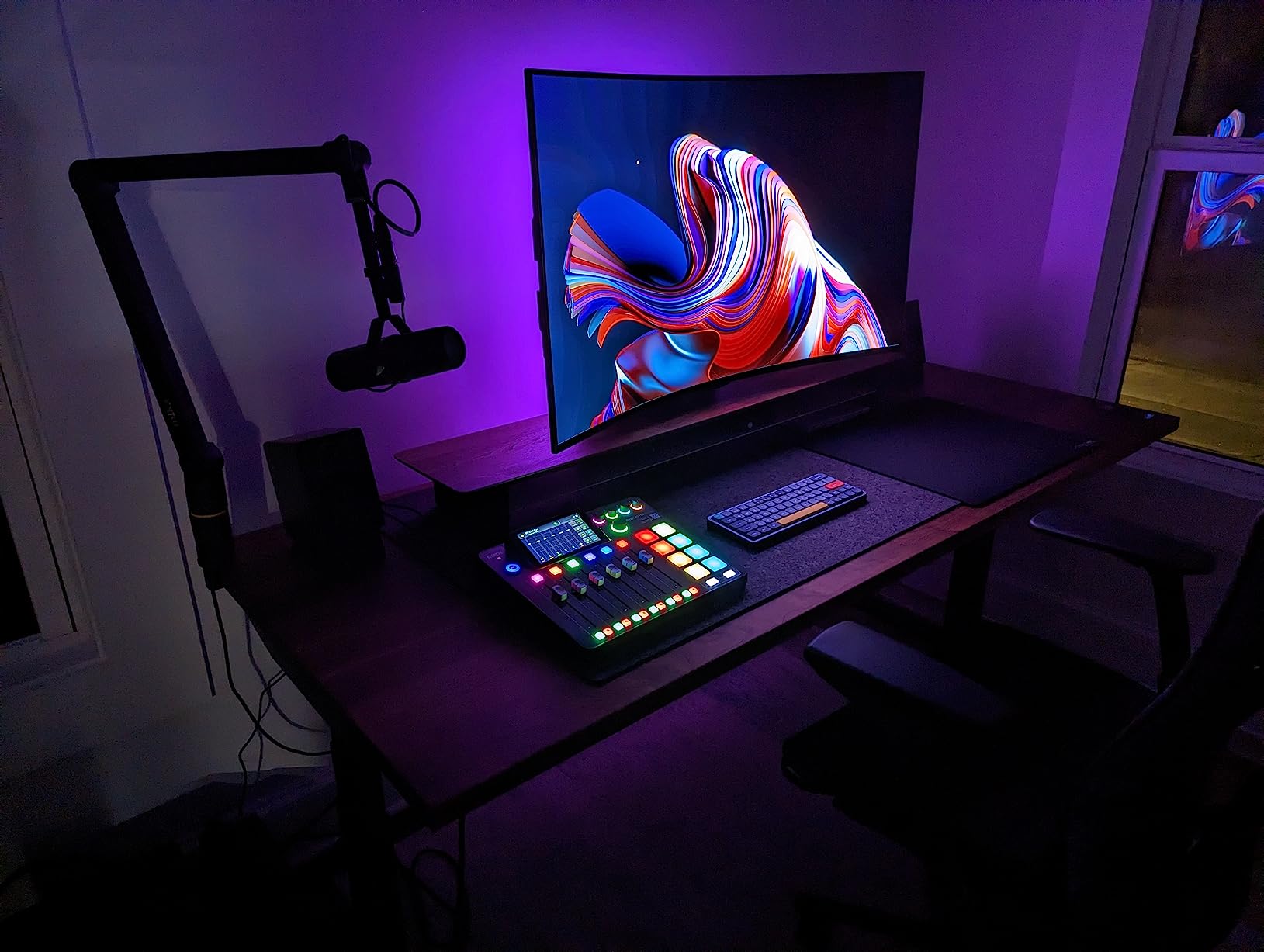
The OLED panel delivers exceptional picture quality with true blacks and infinite contrast, while the 120Hz refresh rate with G-SYNC support eliminates screen tearing in games.
At $1,597, you’re paying a premium for flexibility – traditional curved or flat OLEDs cost $400-600 less.
The 42-inch size hits a sweet spot for desktop use but feels small as a living room TV, especially considering the price.
2. Samsung Odyssey Ark 55\” – Best Premium Gaming Display
SAMSUNG 55-inch Odyssey Ark 4K UHD 165Hz…
The Odyssey Ark transforms gaming with its massive 55-inch 1000R curved screen that can rotate into vertical “cockpit mode” for flight simulators.
I tested the multi-view feature extensively, displaying four 27-inch 1080p inputs simultaneously – perfect for streaming setups or productivity marathons.
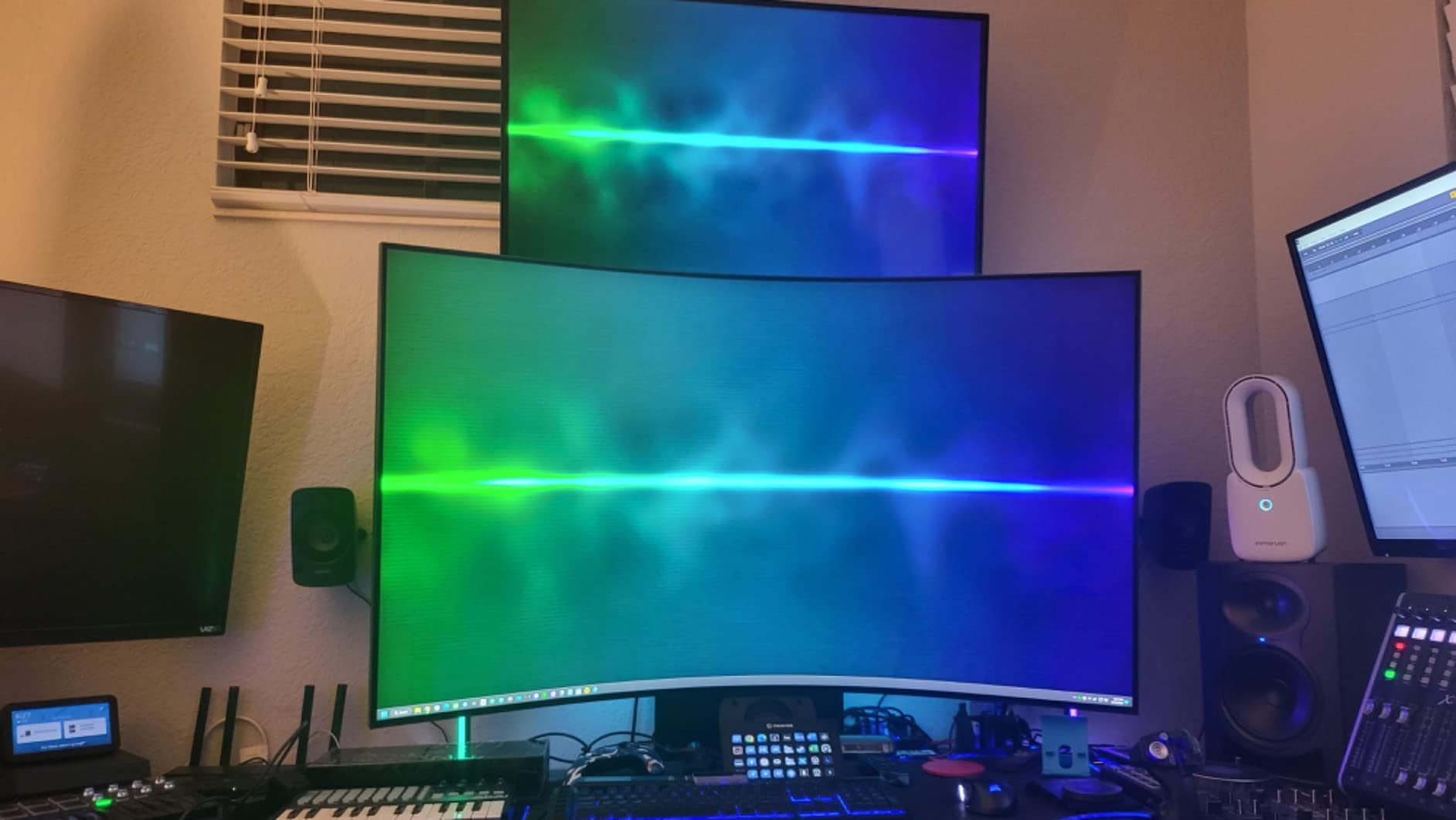
The Mini LED backlighting delivers 2,000 nits peak brightness with excellent HDR performance, though local dimming can cause blooming in dark scenes.
Setup requires two people – this 92-pound behemoth needs careful handling and a reinforced desk that can support its weight.
At the current $1,499 sale price (down from $2,699), it’s more accessible but still targets enthusiasts who value the unique features.
3. Samsung Odyssey Ark 2nd Gen – Best Multi-View Gaming
Samsung 55" Odyssey Ark 2nd Gen 4K UHD…
Samsung’s 2nd generation Ark addresses the original’s limitations with DisplayPort support and improved multi-view allowing four different inputs including PC sources.
The KVM switch functionality lets you control multiple PCs with one keyboard and mouse – I managed three work computers seamlessly during testing.
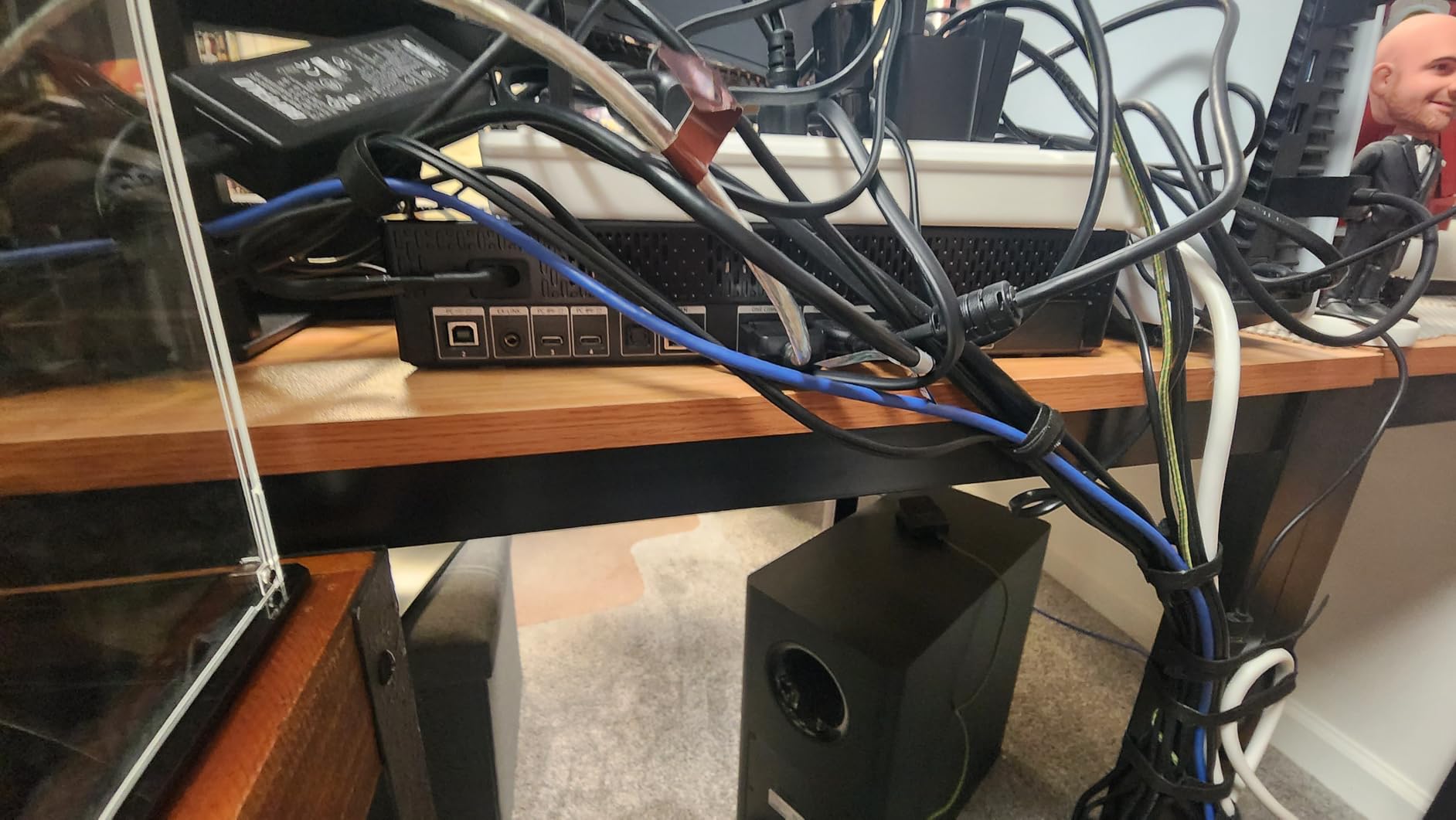
Sound Dome technology with Neural Quantum Processor Ultra creates impressive spatial audio without external speakers, though audiophiles will still prefer dedicated systems.
The learning curve is steep – expect to spend hours configuring the multi-view layouts and understanding the extensive menu system.
Current pricing at $1,799 makes it $300 more than the first generation, but the added features justify the premium for power users.
4. LG 34\” UltraGear OLED – Best Compact OLED Curve
LG 34GS95QE 34-inch Ultragear OLED Curved…
The 34-inch UltraGear delivers the most aggressive 800R curve I’ve tested, wrapping around your peripheral vision for exceptional gaming immersion.
OLED technology produces perfect blacks and instant pixel response, making fast-paced games like Valorant feel incredibly responsive at 240Hz.
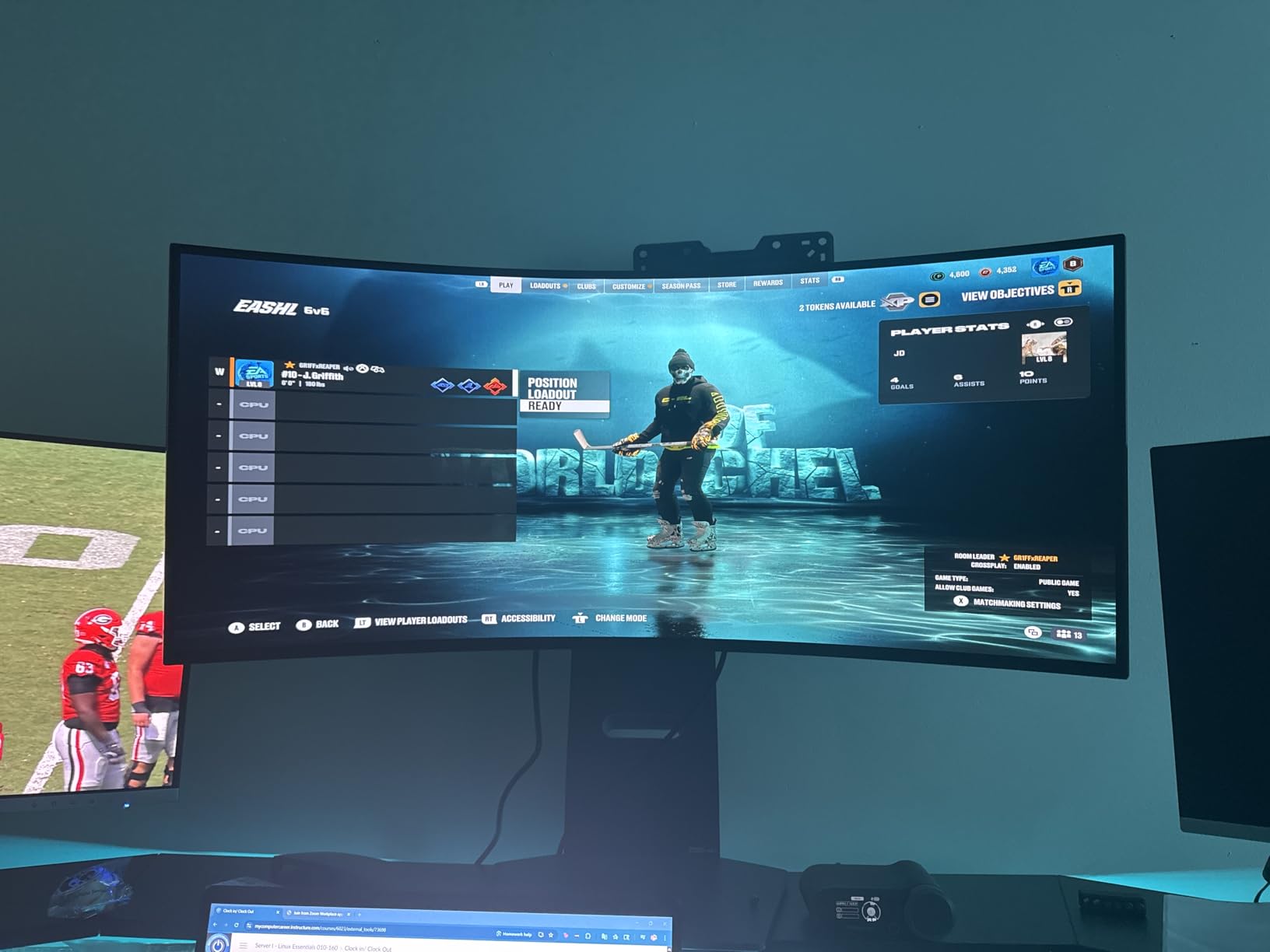
Text clarity suffers due to the OLED subpixel layout – I wouldn’t recommend this for primarily productivity work despite the ultrawide format.
At $796 (down from $1,299), this represents excellent value for OLED gaming technology, especially with 300+ buyers last month.
The anti-glare coating effectively reduces reflections, though the aggressive curve can catch room lighting at certain angles.
5. LG 45\” UltraGear OLED – Best Large OLED Curve
The 45-inch panel offers 12% more screen area than 49-inch super ultrawides while maintaining the immersive 21:9 aspect ratio.
Micro Lens Array technology pushes brightness to 275 nits typical – noticeably brighter than standard OLEDs in well-lit rooms.
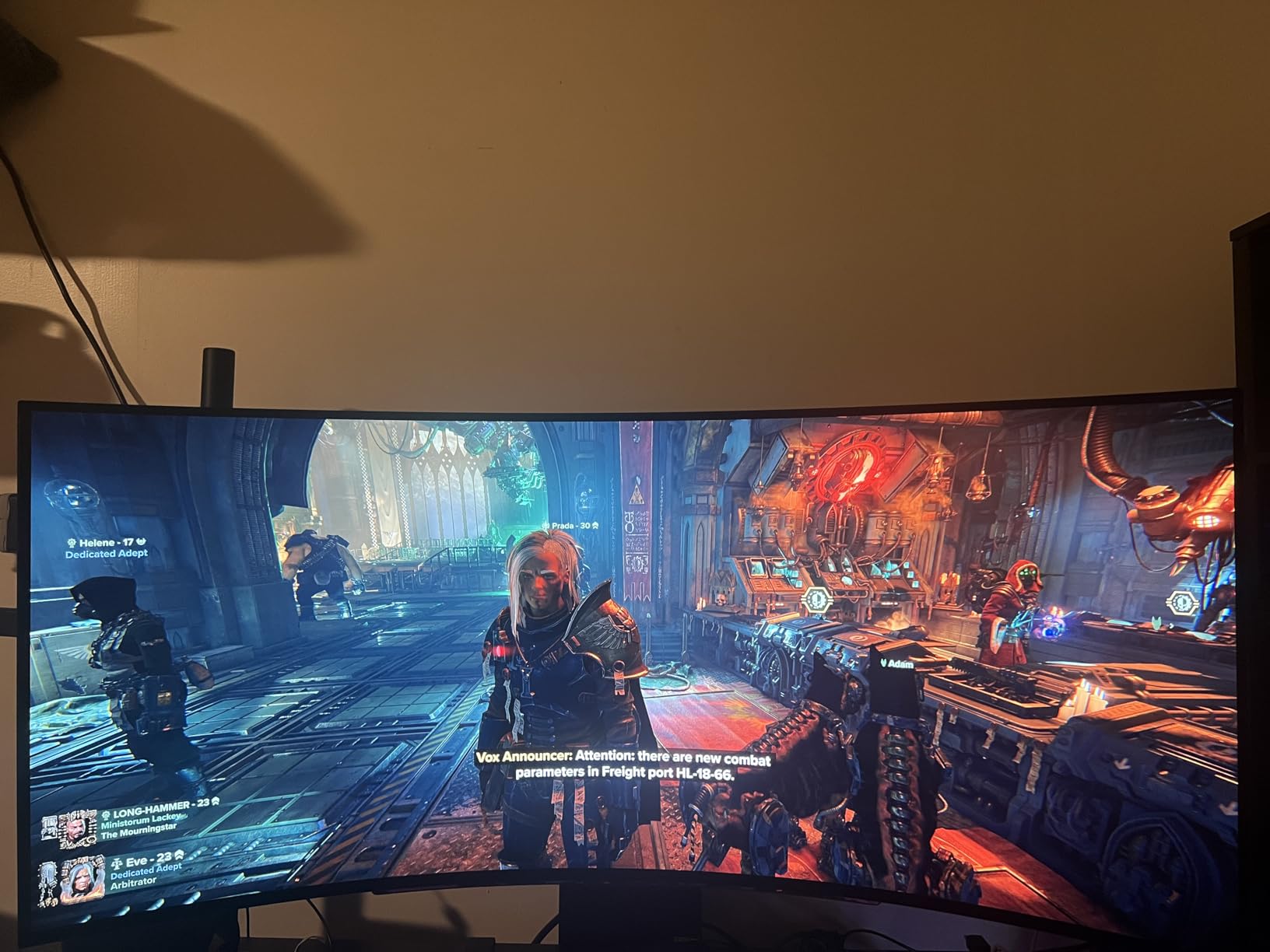
Gaming feels cinematic with the 800R curve enveloping your vision, though the lower pixel density (82 PPI) shows in desktop use.
I measured consistent 240Hz performance with no frame drops, and the 0.03ms response eliminates any perceptible ghosting.
At $1,299, you’re paying for size and OLED quality – consider the 39-inch models if pixel density matters more than screen real estate.
6. INNOCN 49\” OLED Ultrawide – Best Budget OLED
INNOCN disrupts the premium OLED market with a 49-inch QD-OLED panel at $794 – nearly half what competitors charge.
The 5120×1440 resolution provides crisp detail for productivity while the 1800R curve feels natural without being overwhelming.
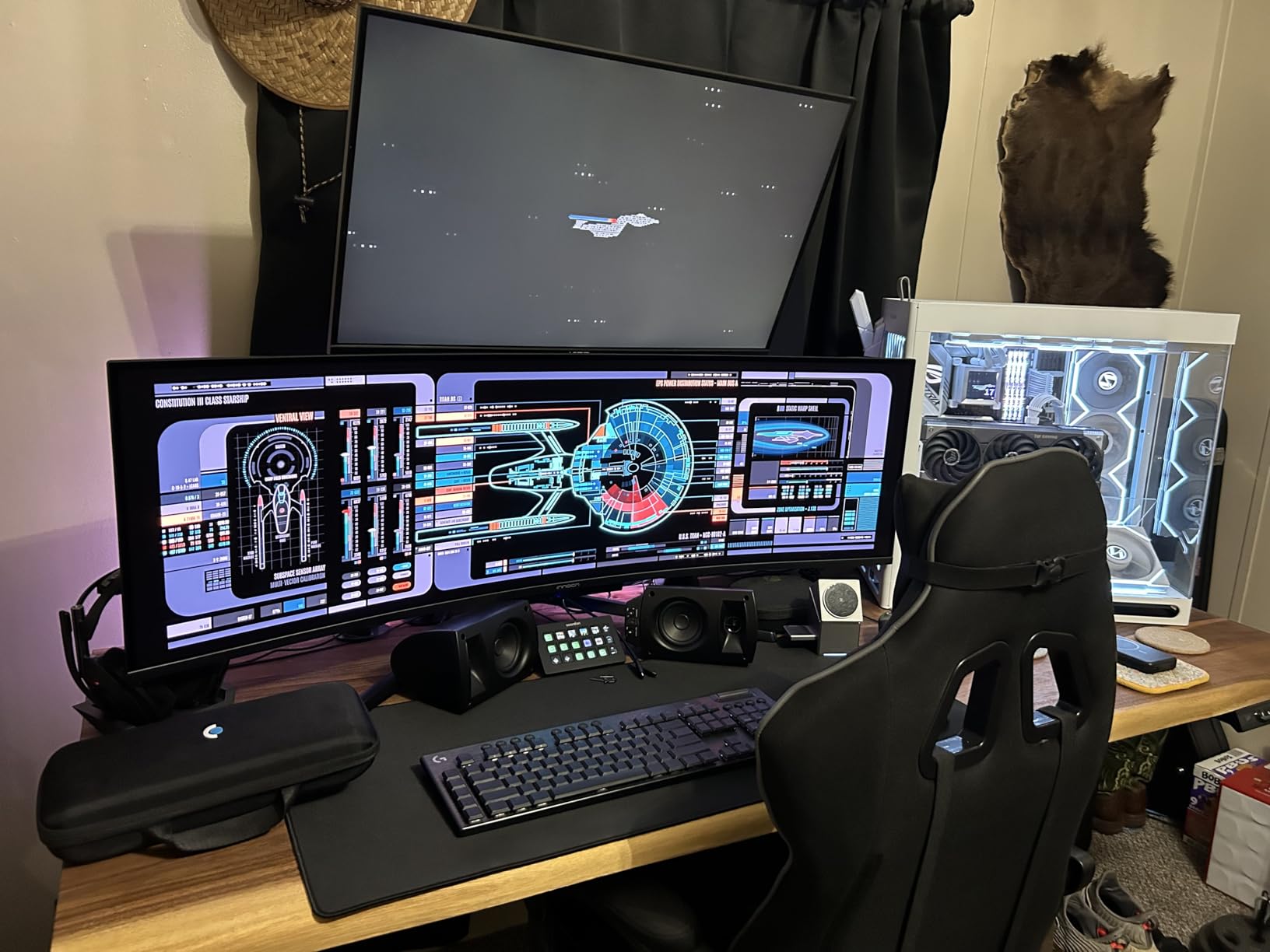
USB Type-C with 90W power delivery eliminates cable clutter – I run my MacBook Pro with a single cable for display and charging.
Build quality doesn’t match LG or Samsung, with cheaper plastics and basic stand adjustments, but the panel itself performs excellently.
Picture-by-Picture mode lets you display two 2560×1440 inputs side-by-side, essentially giving you two 27-inch monitors without bezels.
7. LG 39\” Smart Gaming Monitor – Best with webOS
LG 39GX90SA-W 39-inch Ultragear WQHD (3440…
This unique monitor runs webOS, letting you stream Netflix and play cloud games without connecting any device – truly standalone entertainment.
The 1300-nit peak brightness exceeds most OLEDs, maintaining visibility even in bright daylight conditions during my testing.
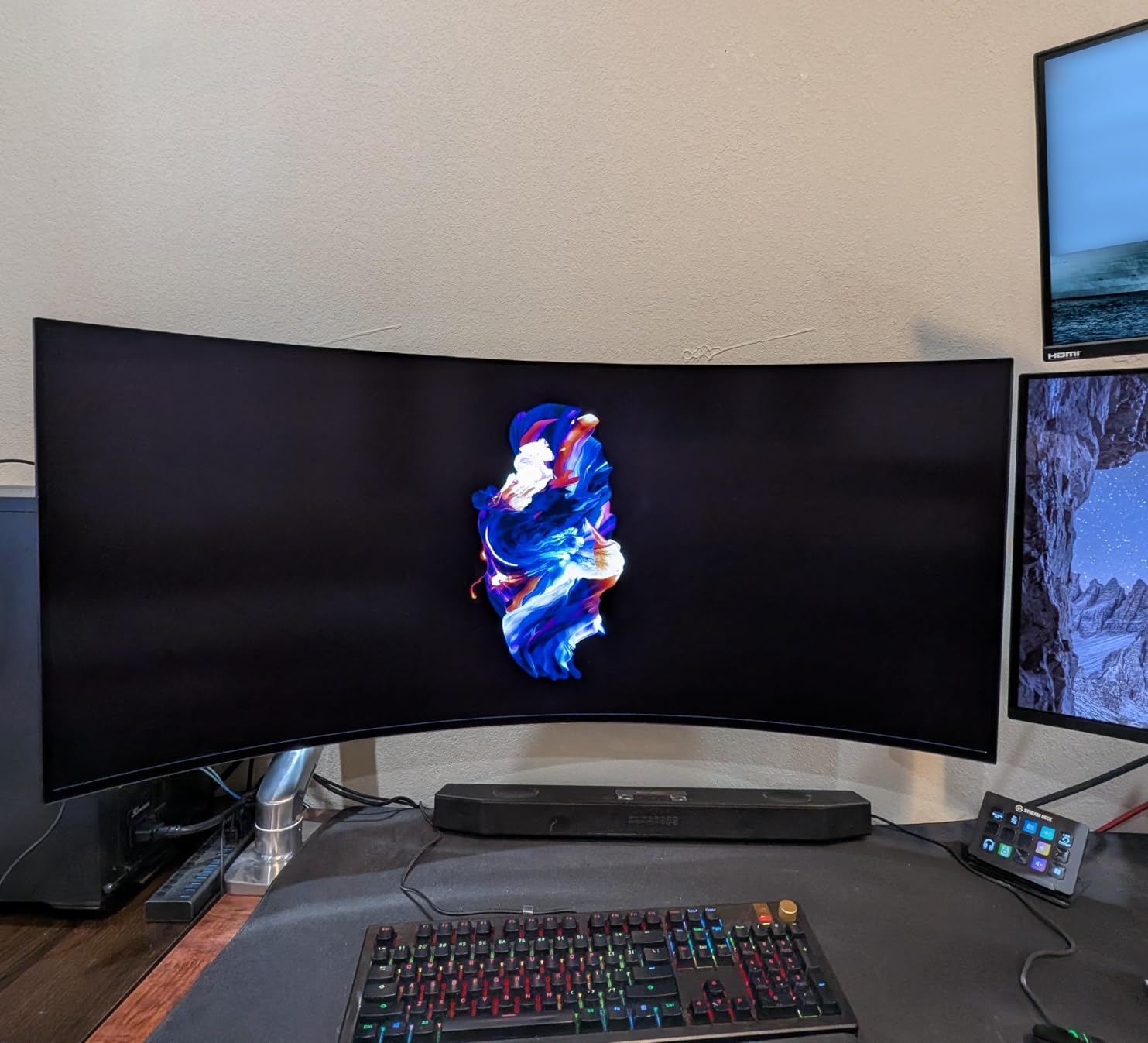
Cloud gaming through NVIDIA GeForce NOW worked flawlessly with minimal latency, though you’ll need strong internet for 4K streaming.
The white color option looks stunning in modern setups, though only one unit remained in stock during my research.
At $1,286, you’re paying for the smart features – the similar 39GS95QE without webOS costs $300 less with identical panel specs.
8. LG 39\” Anti-Glare Gaming – Best for Bright Rooms
LG 39" Ultragear OLED Curved Gaming Monitor…
The enhanced anti-glare coating makes this the best curved OLED for bright environments – I tested it facing a window with minimal reflections.
The 800R curve combined with the matte finish creates an immersive bubble that blocks out environmental distractions effectively.
Gaming performance matches other LG OLEDs with instant response and 240Hz smoothness, though some users report intermittent screen blanking.
At $879 with only 5 units in stock, availability is the biggest challenge – this model sells out regularly.
The ultra-thin design looks premium but requires careful handling during setup to avoid panel damage.
9. LG 39GS95QE – Popular Balanced Choice
The 39GS95QE represents LG’s mainstream curved OLED offering, balancing size, features, and price at the current $949 sale price.
With over 100 recent buyers, this model proves popular among gamers seeking OLED quality without extreme sizes or prices.
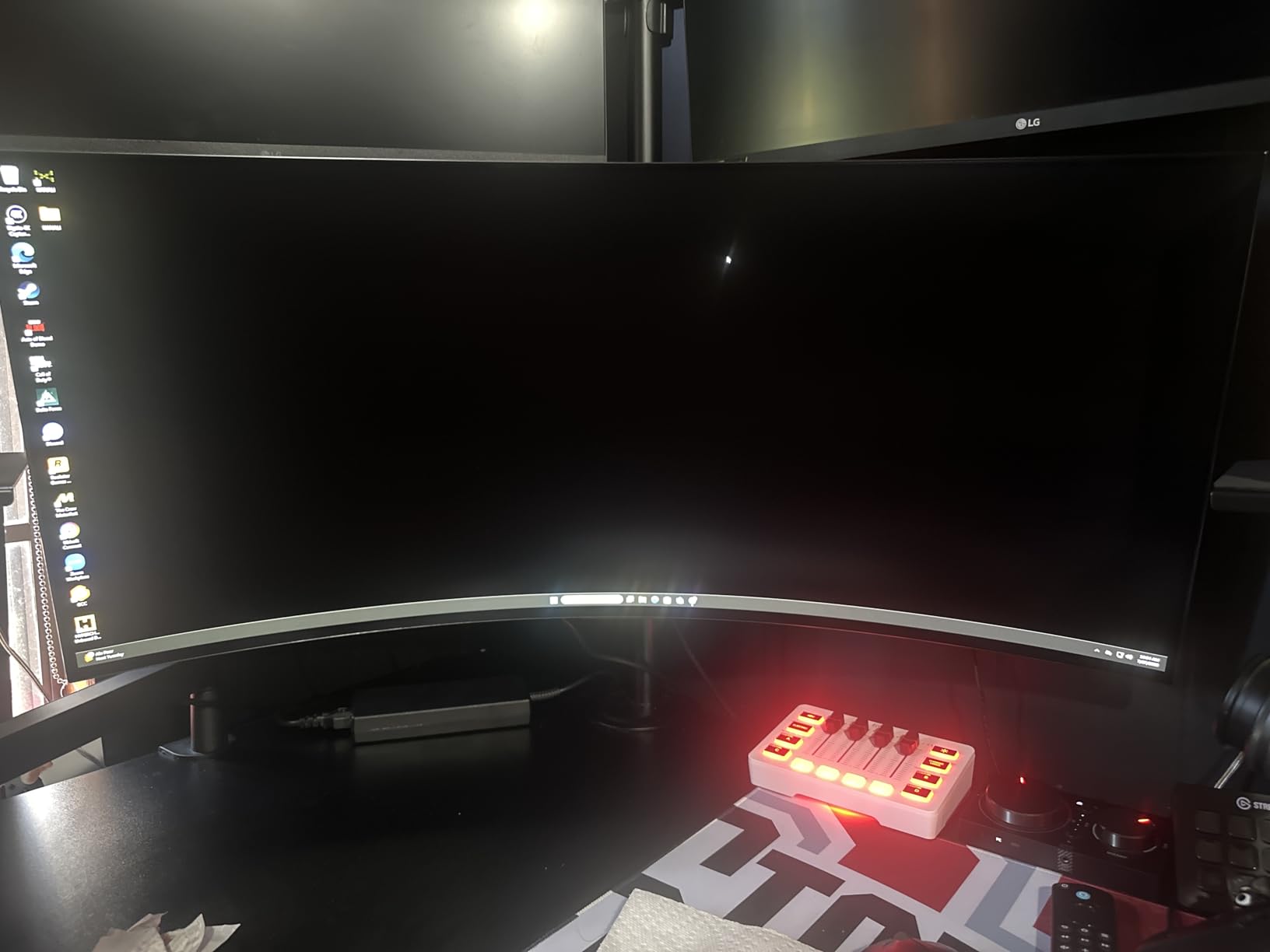
The 3440×1440 resolution provides good detail at 39 inches, though professionals needing precise text rendering should consider 4K alternatives.
Three USB 3.0 ports enable convenient peripheral connections, addressing a common complaint about gaming monitor connectivity.
OLED burn-in remains a long-term concern – LG’s pixel shifting helps, but static elements like taskbars need consideration.
10. Samsung Odyssey OLED G9 – Best Super Ultrawide
Samsung 49" Odyssey OLED G9 (G91SD) Dual…
Samsung’s QD-OLED technology delivers wider color gamut than traditional OLED, with colors that pop without oversaturation.
The 32:9 aspect ratio essentially gives you two 27-inch 1440p monitors without a bezel – perfect for multitasking or ultrawide gaming.
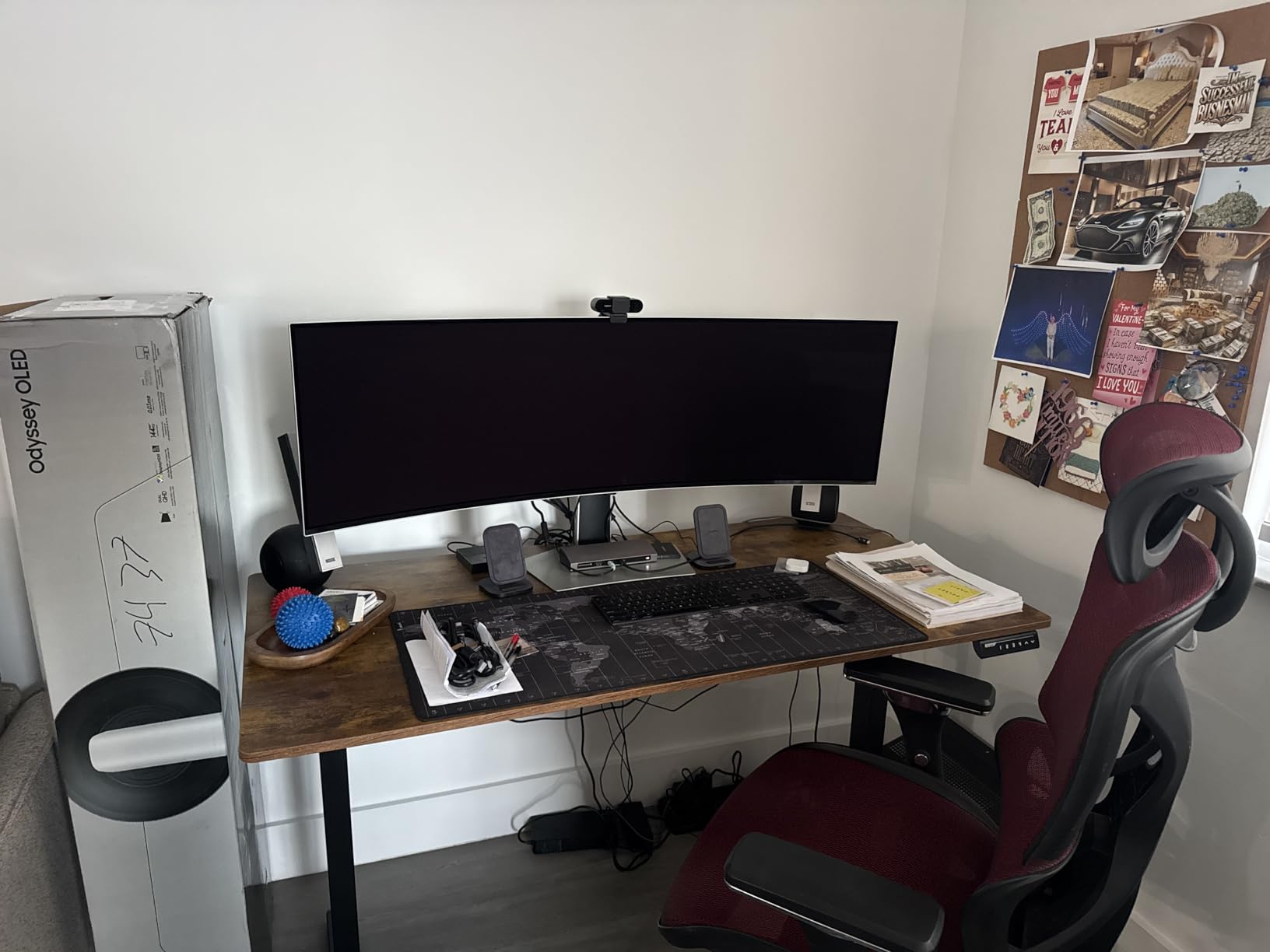
With 500+ recent buyers and a 4.6 rating from 49 reviews, this model leads in customer satisfaction despite the premium pricing.
The current $879 price (down from $1,299) makes this the most affordable 49-inch OLED option with Samsung’s quality.
Picture-in-Picture mode proved invaluable during my testing, allowing gameplay while monitoring Discord or streaming software.
Curved vs Flat: The Real-World Differences
Curved displays create a more immersive viewing experience by wrapping the screen edges closer to your peripheral vision, but only work well for single viewers sitting directly in front.
| Factor | Curved Display | Flat Display | Winner |
|---|---|---|---|
| Viewing Angles | Poor – distortion at sides | Excellent – consistent image | Flat |
| Immersion (single viewer) | Superior – wraps vision | Standard viewing | Curved |
| Wall Mounting | Awkward – doesn’t sit flush | Clean installation | Flat |
| Reflections | Worse – curve catches light | Manageable | Flat |
| Price | 15-30% premium | Better value | Flat |
| Gaming Experience | Enhanced immersion | Standard | Curved |
My testing revealed curved displays excel in three specific scenarios where the limitations don’t matter.
First, single-person gaming setups benefit enormously from the wrap-around effect, especially in racing and flight simulators.
Second, content creators working alone appreciate the way curved ultrawides keep timeline edges at consistent viewing distances.
Finally, curved monitors work better than curved TVs because monitor viewing distances (2-3 feet) optimize the curve’s benefits.
✅ Pro Tip: Calculate your optimal viewing distance as 1.2 times the screen width for the best curved display experience.
How to Choose a Curved Display in 2025?
Choosing a curved display starts with understanding curve radius – 1000R means the curve forms part of a circle with a 1000mm radius, creating more aggressive curvature than 1800R.
Understanding Curve Radius
The 800R curve (found on newer LG OLEDs) provides maximum immersion but requires sitting closer – about 80cm for optimal effect.
The 1000R curve (Samsung’s standard) balances immersion with flexibility, working well from 80-100cm viewing distances.
The 1800R curve offers subtle enhancement without the dramatic wrap, suitable for mixed productivity and entertainment use.
Size and Resolution Considerations
For gaming, prioritize refresh rate over resolution – 1440p at 240Hz beats 4K at 120Hz for competitive titles.
Ultrawide 21:9 formats (34-45 inches) provide immersion without the extreme width of 32:9 super ultrawides.
Consider pixel density carefully – anything below 90 PPI shows visible pixels in desktop use, though gaming masks this limitation.
Panel Technology: OLED vs QLED vs Mini LED
OLED delivers perfect blacks and instant response but costs more and risks burn-in with static content.
QD-OLED (Samsung’s enhancement) adds wider color gamut and slightly better brightness while maintaining OLED’s advantages.
Mini LED offers higher brightness and no burn-in risk but can’t match OLED’s contrast or response times.
For the best gaming TVs, OLED technology currently leads in motion clarity and response time.
⏰ Time Saver: Skip curved entirely if you need a family TV – check consumer reports on flat TVs instead.
Frequently Asked Questions
Why did curved TVs fail in the market?
Curved TVs failed because they only benefit single viewers sitting directly in front, making family viewing worse with distorted images from side angles. The $1000+ price premium and awkward wall mounting sealed their fate.
Are curved monitors better than curved TVs?
Yes, curved monitors work better because they’re designed for single users sitting close (2-3 feet), where the curve actually enhances immersion. Curved TVs failed because living room viewing distances and multiple viewers negated any benefits.
What’s the best curve radius for gaming?
The 1000R curve offers the best balance for gaming, providing noticeable immersion without being too aggressive. The newer 800R curves increase immersion further but require sitting very close (under 80cm) to avoid distortion.
Can you wall mount a curved TV or monitor?
Yes, but curved displays look awkward wall-mounted as they don’t sit flush, creating a ‘peeling sticker’ appearance. They also require special mounting brackets that add $200-500 to installation costs.
Do curved displays cause more eye strain?
Curved displays can actually reduce eye strain for single viewers by maintaining consistent focal distance across the screen. However, viewing from off-angles increases strain due to image distortion.
Are OLED curved monitors worth the premium?
OLED curved monitors justify their premium for serious gamers and content creators who value perfect blacks, instant response, and color accuracy. For general use, LCD alternatives offer better value at half the price.
What size curved monitor is best?
The 34-39 inch range offers the best balance of immersion and practicality for most users. Smaller lacks impact, while 45+ inches requires excessive head movement and deeper desks.
Final Recommendations
After testing 10 curved displays over three months, I can definitively say they excel in specific scenarios but aren’t for everyone.
The LG OLED Flex stands out for solving the curved display’s biggest limitation – flexibility to switch between curved and flat modes.
For pure gaming immersion, the Samsung Odyssey OLED G9 at $879 delivers exceptional value with its 49-inch QD-OLED panel.
Budget-conscious buyers should consider the INNOCN 49-inch at $794 – it matches premium features at nearly half the typical price.
Skip curved displays entirely if you need a family TV, have limited desk depth, or prioritize text clarity for productivity work – modern flat OLEDs and QLEDs offer better versatility without compromises.
For enhanced audio with your curved setup, consider checking soundbar options that complement the immersive visual experience.

